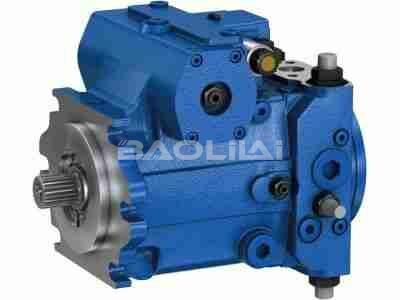Dimensional tolerance points to ensure the normal function of the plunger pump
Dimensional tolerances on plunger pump parts are critical to ensuring proper function, efficiency and service life of the pump. Tolerance refers to the acceptable dimensional variation allowed during the manufacturing process. Specific dimensional tolerances for plunger pump parts may vary depending on the type and size of the pump and the materials used. However, here are some general considerations:
1. Plunger size:
Diameter Tolerance: The diameter of the plunger is a critical parameter. Tolerances on plunger diameter are typically specified in microns (μm) or thousandths of an inch (mil).
Length Tolerance: The overall length of the plunger is another important dimension. It should be within specified ranges to ensure proper fit and functionality.
2.Cylinder bore size:
Bore Tolerance: The inside diameter of the cylinder bore is critical to maintaining proper clearance to the plunger. Bore diameter tolerances are also specified in microns or thousandths of an inch.
Roundness and Straightness: These properties ensure that the hole is uniform and free of deviations that could affect plunger movement.
3.Sealing and packaging dimensions:
Tolerances on seals and packing assemblies are critical to preventing leaks and ensuring proper sealing. Dimensions such as cross-sectional diameter, height and groove size should be strictly controlled.
4. Material thickness:
For components such as pump casings and other structural components, tolerances on material thickness are important to maintain the structural integrity of the pump.
H1-P-100-L-A-A-A3-C1-N-D3-H-F1-NN-L-40-L-40-M-M-24-PN-NNN-NNN H1P100LAAA3C1ND3HF1NNL40L40MM24PNNNNNNN
H1-P-100-L-A-A-A3-C1-N-D3-H-F1-H1-L-40-L-40-M-M-24-PN-NNN-NNN H1P100LAAA3C1ND3HF1H1L40L40MM24PNNNNNNN
H1-P-100-L-A-A-A3-C1-B-F4-H-G1-H6-L-38-L-38-D-M-24-PN-NNN-NNN H1P100LAAA3C1BF4HG1H6L38L38DM24PNNNNNNN
H1-P-100-L-A-A-A3-C1-B-D3-H-G1-NN-L-38-L-38-D-M-24-PN-NNN-NNN H1P100LAAA3C1BD3HG1NNL38L38DM24PNNNNNNN
H1-P-100-L-A-A-A2-C3-N-D6-H-F4-H1-L-28-L-28-M-L-24-PN-NNN-NNN H1P100LAAA2C3ND6HF4H1L28L28ML24PNNNNNNN
H1-P-100-L-A-A-A2-C2-N-D8-H-G9-H5-L-35-L-35-D-P-24-PN-NNN-NNN H1P100LAAA2C2ND8HG9H5L35L35DP24PNNNNNNN
H1-P-100-L-A-A-A2-C2-N-D8-H-G3-NN-L-15-L-35-M-P-24-PN-NNN-NNN H1P100LAAA2C2ND8HG3NNL15L35MP24PNNNNNNN
H1-P-100-L-A-A-A2-C2-N-D8-H-G3-H3-L-15-L-35-M-P-24-PN-NNN-NNN H1P100LAAA2C2ND8HG3H3L15L35MP24PNNNNNNN
H1-P-100-L-A-A-A2-C2-N-D8-H-G1-NN-L-42-L-42-M-P-24-PN-NNN-NNN H1P100LAAA2C2ND8HG1NNL42L42MP24PNNNNNNN
H1-P-100-L-A-A-A2-C2-N-D8-H-G1-H1-K-42-K-42-N-E-22-PN-NNN-NNN H1P100LAAA2C2ND8HG1H1K42K42NE22PNNNNNNN
H1-P-100-L-A-A-A2-C2-N-D8-H-F4-H5-L-35-L-35-D-P-24-PN-NNN-NNN H1P100LAAA2C2ND8HF4H5L35L35DP24PNNNNNNN
H1-P-100-L-A-A-A2-C2-N-D8-H-F4-H1-K-42-K-42-N-E-22-PN-NNN-NNN H1P100LAAA2C2ND8HF4H1K42K42NE22PNNNNNNN
H1-P-100-L-A-A-A2-C2-N-D8-H-F1-H3-K-38-K-38-N-E-22-PN-NNN-NNN H1P100LAAA2C2ND8HF1H3K38K38NE22PNNNNNNN
H1-P-100-L-A-A-A2-C2-N-D6-H-F1-H1-L-45-L-45-D-L-26-PN-NNN-NNN H1P100LAAA2C2ND6HF1H1L45L45DL26PNNNNNNN
H1-P-100-L-A-A-A2-C2-N-D6-H-F1-H1-L-40-L-40-D-L-26-PN-NNN-NNN H1P100LAAA2C2ND6HF1H1L40L40DL26PNNNNNNN
H1-P-100-L-A-A-A2-C2-N-D3-H-G9-NN-L-40-L-40-D-M-24-PN-NNN-NNN H1P100LAAA2C2ND3HG9NNL40L40DM24PNNNNNNN
H1-P-100-L-A-A-A2-C2-N-D3-H-F4-H3-L-45-L-45-D-M-24-PN-NNN-NNN H1P100LAAA2C2ND3HF4H3L45L45DM24PNNNNNNN
H1-P-100-L-A-A-A2-C2-B-D3-H-G1-NN-L-38-L-38-M-M-26-PN-NNN-NNN H1P100LAAA2C2BD3HG1NNL38L38MM26PNNNNNNN
H1-P-100-L-A-A-A2-C1-N-F5-H-G9-H6-L-40-L-40-M-P-24-PN-NNN-NNN H1P100LAAA2C1NF5HG9H6L40L40MP24PNNNNNNN
H1-P-100-L-A-A-A2-C1-N-D8-H-F1-H3-K-45-K-45-N-E-28-PN-NNN-NNN H1P100LAAA2C1ND8HF1H3K45K45NE28PNNNNNNN
5. Surface finish:
Surface finish specifications are not exactly dimensional tolerances, but they are important to the function of the pump. Ra (average roughness) values are often specified to ensure smooth operation of moving parts.
6. Clearance:
Clearance tolerances between moving parts, such as plungers and cylinders, are critical to proper lubrication and preventing excessive wear.
7.Material properties:
In addition to dimensional tolerances, the material properties of plunger pump parts are critical to their performance. Materials should meet specific standards for hardness, tensile strength, corrosion resistance and other relevant properties.
8. Alignment and assembly tolerances:
Tolerances related to the alignment of various components during assembly are important to ensure smooth operation of the pump. Misalignment results in increased wear and reduced efficiency.
9. Dynamic tolerance:
For rotating or reciprocating components, dynamic tolerances become important. These involve considerations of movement and clearance during operation. This is especially important for high speed or high pressure applications.
10. Temperature and environmental tolerance:
Some pumps operate in extreme temperatures or harsh environments. Tolerances may need to account for thermal expansion, contraction, or resistance to corrosive substances.

11.Key points of quality control:
Manufacturers often employ various quality control points to ensure that parts produced meet specified tolerances. This may involve inspection using precision instruments such as calipers, micrometers and coordinate measuring machines.
12.International standards:
Various international standards, such as those developed by organizations such as the International Organization for Standardization (ISO), can provide guidance on dimensional tolerances in pump manufacturing. Adherence to these standards ensures compatibility and interchangeability of parts.
13.Customer requirements:
Depending on the application and industry, customers may have specific requirements for dimensional tolerances. Pump manufacturers often work closely with customers to meet their specific specifications.
14. Statistical Process Control (SPC):
Implementing statistical process control techniques during manufacturing can help monitor and control changes in dimensional characteristics. SPC involves the use of statistical methods to track and control the manufacturing process, ensuring that parts always meet specified tolerances.
15. Documentation and Traceability:
Maintaining detailed documentation of the manufacturing process, including measurement and inspection data, is critical. Not only does this documentation aid in quality control, but it also provides traceability if issues arise later in the product life cycle.
16. Feedback and continuous improvement:
Feedback mechanisms from field performance and customer experience can provide valuable insights for continuous improvement. Manufacturers can use this information to adjust tolerances or improve manufacturing processes to improve the overall reliability and performance of plunger pump parts.
H1-P-100-L-A-A-A2-C1-N-D3-H-G3-H3-L-35-L-35-M-M-24-PN-NNN-NNN H1P100LAAA2C1ND3HG3H3L35L35MM24PNNNNNNN
H1-P-100-L-A-A-A2-C1-B-D3-H-G1-H3-L-40-L-40-D-M-24-PN-NNN-NNN H1P100LAAA2C1BD3HG1H3L40L40DM24PNNNNNNN
H1-P-089-R-A-A-R3-C2-C-D8-H-F1-H5-L-45-L-45-M-P-26-P1-NNN-D4F H1P089RAAR3C2CD8HF1H5L45L45MP26P1NNND4F
H1-P-089-R-A-A-R3-C2-C-D8-H-F1-H5-L-45-L-45-M-P-26-P1-NNN-D4E H1P089RAAR3C2CD8HF1H5L45L45MP26P1NNND4E
H1-P-089-R-A-A-P9-C2-C-D6-K-G9-H5-L-35-L-35-M-L-28-P2-NNN-D6F H1P089RAAP9C2CD6KG9H5L35L35ML28P2NNND6F
H1-P-089-R-A-A-P8-C2-C-F4-K-G9-H6-L-45-L-45-M-M-28-P2-NNN-D5J H1P089RAAP8C2CF4KG9H6L45L45MM28P2NNND5J
H1-P-089-R-A-A-P7-C2-C-D6-K-G9-NN-L-44-L-44-M-L-26-P2-NNN-D4F H1P089RAAP7C2CD6KG9NNL44L44ML26P2NNND4F
H1-P-089-R-A-A-P7-C1-C-F6-K-G1-H6-L-42-L-42-M-L-26-P2-NNN-D4F H1P089RAAP7C1CF6KG1H6L42L42ML26P2NNND4F
H1-P-089-R-A-A-P6-C2-C-F6-K-G9-H6-L-45-L-45-M-L-28-P2-NNN-D3F H1P089RAAP6C2CF6KG9H6L45L45ML28P2NNND3F
H1-P-089-R-A-A-P6-C2-C-F5-K-G9-H6-L-45-L-45-M-P-28-P2-NNN-D3F H1P089RAAP6C2CF5KG9H6L45L45MP28P2NNND3F
H1-P-089-R-A-A-P6-C2-C-F4-K-F1-H6-L-45-L-45-M-M-28-P2-NNN-D3F H1P089RAAP6C2CF4KF1H6L45L45MM28P2NNND3F
H1-P-089-R-A-A-P6-C2-C-D3-K-G1-H2-L-45-L-45-M-M-28-P2-NNN-D3F H1P089RAAP6C2CD3KG1H2L45L45MM28P2NNND3F
H1-P-089-R-A-A-P6-C2-C-D3-K-F1-H3-L-45-L-45-M-M-28-P2-NNN-D3F H1P089RAAP6C2CD3KF1H3L45L45MM28P2NNND3F
H1-P-089-R-A-A-N2-C2-C-F6-H-G9-H6-L-45-L-45-M-L-26-P1-NNN-NNN H1P089RAAN2C2CF6HG9H6L45L45ML26P1NNNNNN
H1-P-089-R-A-A-N2-C2-C-F5-H-G9-H6-L-45-L-45-D-P-30-P1-NNN-NNN H1P089RAAN2C2CF5HG9H6L45L45DP30P1NNNNNN
H1-P-089-R-A-A-N2-C2-C-F5-H-G9-H6-L-40-L-40-N-E-30-P1-NNN-NNN H1P089RAAN2C2CF5HG9H6L40L40NE30P1NNNNNN
H1-P-089-R-A-A-N2-C2-C-D6-H-G1-NN-L-45-L-45-M-L-26-P1-NNN-NNN H1P089RAAN2C2CD6HG1NNL45L45ML26P1NNNNNN
H1-P-089-R-A-A-M2-C2-B-F5-H-G1-H6-L-35-L-35-M-P-24-H1-NNN-M00 H1P089RAAM2C2BF5HG1H6L35L35MP24H1NNNM00
H1-P-089-R-A-A-M1-D1-N-D6-H-G9-NN-K-38-K-38-M-L-20-H1-NNN-M00 H1P089RAAM1D1ND6HG9NNK38K38ML20H1NNNM00
H1-P-089-R-A-A-M1-C7-B-F4-H-G9-H6-L-30-L-30-M-M-24-H1-NNN-M00 H1P089RAAM1C7BF4HG9H6L30L30MM24H1NNNM00
17. Industry specific standards:
Different industries may have specific standards and regulations governing dimensional tolerances on pump components. Manufacturers must understand and comply with these standards to ensure that their products meet the necessary requirements for specific applications.
18.Tools and equipment maintenance:
Regular maintenance of manufacturing equipment and tools is critical to maintaining the precision and accuracy of the manufacturing process. Worn or poorly maintained tools can cause dimensional changes.
19. Assembly tolerance:
Tolerances during assembly are equally important. Proper alignment and fit during assembly helps improve the overall performance and reliability of your plunger pump. Assembly tolerances should be considered together with the tolerances of individual parts.
20. Cost considerations:
Balancing tight tolerances with cost considerations is often part of the manufacturing decision-making process. Striking the right balance ensures that parts meet performance requirements without incurring unnecessary production expense.
In summary, achieving and maintaining dimensional tolerances on plunger pump parts requires a combination of precision engineering, quality control essentials, compliance with standards, and a commitment to continuous improvement. Manufacturers must consider the specific requirements of the intended application, materials used, and industry standards to produce reliable and efficient plunger pump assemblies. Regular quality audits and a commitment to manufacturing best practices contribute to the long-term success of plunger pump manufacturers and end users.
This article is published by the official website of Baolilai Hydraulics, please contact the author and indicate the source for reprinting:https://www.baolilai-pump.cn/news/1156.html






